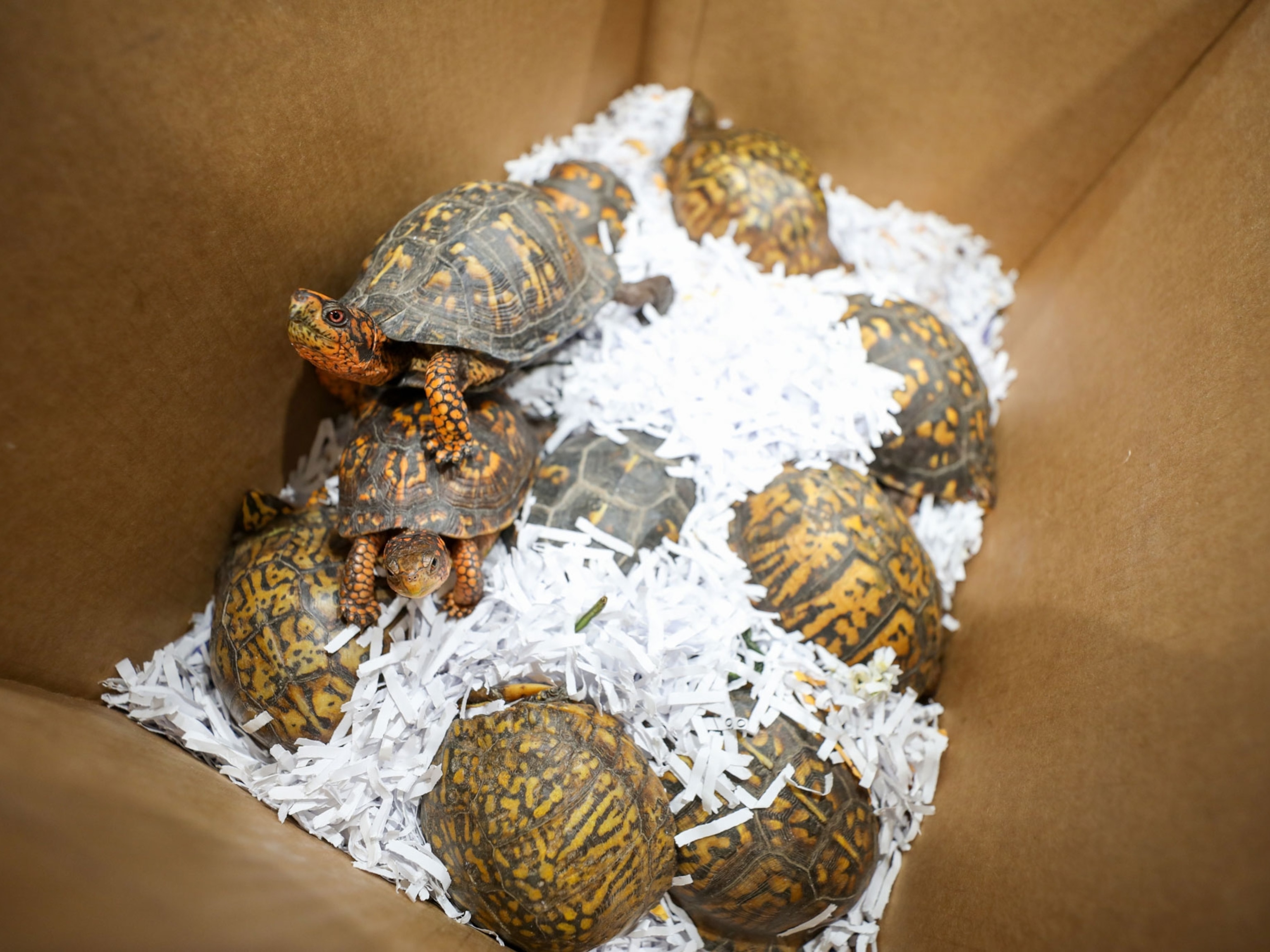
Bug smuggling is big business
Demand for exotic pets and collectors’ items drives a flourishing illegal trade in beetles, spiders, and more.
Special agent Ryan Bessey was in his office at the New Jersey branch of the U.S. Fish and Wildlife Service, in Galloway, on September 23, 2015, when he took a call from a colleague in the intelligence unit. The analyst told him that French customs officers had seized 115 emperor scorpions in two shipments from Cameroon. They were addressed to a man in Metuchen, New Jersey, named Wlodzimie Lapkiewicz.
If French authorities considered the bust important enough to tell the U.S. about it, Lapkiewicz was worth looking into, Bessey thought. He began to do some digging.

He discovered that Lapkiewicz had a track record in the U.S. too. Two months earlier, emperor scorpions and giant African millipedes from Tanzania had escaped from a package addressed to Lapkiewicz on a postal service delivery truck. (An exterminator killed the animals.)
Around the same time, Bessey says he learned that Lapkiewicz was selling spiders, millipedes, and emperor and dictator scorpions on Facebook. The criminal complaint alleges that Lapkiewicz was instructing suppliers to mislabel boxes to evade customs officers. “It showed this was part of an ongoing commercial enterprise,” Bessey says.
Lapkiewicz didn’t respond to multiple Facebook messages from National Geographic requesting an interview, and his lawyer didn’t respond to emails and a voicemail.
It’s illegal to import most insects and other arthropods, including spiders, scorpions, and millipedes, or their parts, into the U.S. without a permit from the Fish and Wildlife Service. The U.S. Department of Agriculture also requires a permit to bring in some live invertebrates. Emperor scorpions and dictator scorpions require special paperwork because they’re listed by the Convention on International Trade in Endangered Species of Wild Fauna and Flora (CITES), an international agreement that regulates cross-border sales of species.
Then three years later, in 2018, U.S. customs officers in Indiana seized about a dozen giant African millipedes from a Lapkiewicz-bound package labeled “Plush Toys for my Friends Child about to be born,” according to the criminal complaint. A couple of weeks after that, wildlife inspectors at New York’s John F. Kennedy Airport opened a shipment addressed to Lapkiewicz to find 245 small cylinders containing the egg sacs of orchid mantises, pink and white insects from Southeast Asia that look like flower petals.
In August 2018 the U.S. District attorney’s office charged Lapkiewicz with smuggling wildlife and false labeling—federal crimes that carry a collective maximum of 25 years in prison. Lapkiewicz pleaded guilty to smuggling wildlife only. He was sentenced on July 2, 2019, to six months home confinement and four years probation.
“I knew at the time that there was a market for invertebrates,” says Bessey, who had worked as an agent for five years before investigating Lapkiewicz. “I really didn’t realize how large the market was until this case.”
Cockroaches—“great pets”
Demand for what most of us may think of as creepy crawlies—live as exotic pets or preserved as collectors’ treasures—has fueled a massive trade in everything from beetles and stick insects to tarantulas and scorpions. People even want cockroaches, the creature that once made me flee my apartment for 24 hours after finding one skittering around the shower. They make “great pets,” says Carlos Martinez, the owner of Reptile Factory, a pet shop based in Southern California.
Many insects and other arthropods are captive bred or otherwise sold in accordance with the law, but a global black market flourishes alongside the legal trade. It’s a little known corner of the illegal wildlife trade, a multibillion-dollar industry associated more with rhino horn and elephant ivory than the tiny creatures that can terrify us.
“A lot of things you find in the trade haven’t been legally exported from the area of origin or legitimately imported from the destination country,” says Stéphane De Greef, an environmental engineer and insect enthusiast from Belgium who runs a popular entomology group on Facebook. “It’s sadly very common.”
News stories of bug skulduggery abound. Take, for example, the Czech national fined in 2017 for attempting to smuggle 4,226 beetles, scorpions, spiders, and other invertebrates out of Australia. And the 7,000 spiders, insects, and other invertebrates stolen from the Philadelphia Insectarium and Butterfly Pavillion last year in a suspected attempt to sell them into the pet trade.
There’s no centralized database of seizures, which means there’s no way to estimate the global scale of the illegal trade. But Fish and Wildlife Service data obtained by National Geographic show that authorities in the U.S., a major demand country, seized at least 9,000 live and dead arthropods (not including crustaceans) that were being brought into the country for commercial purposes between June 2018 and June 2019. This likely represents a fraction of the total number of smuggled arthropods, which are easy to conceal in suitcases and shipping boxes.
Many countries ban or require special permits for the capture and export of certain species or species in particular areas, such as national parks, but that hasn’t stopped people from snatching little critters from the wild. Some people take them to keep or study. Others collect them to sell regionally as food. When it comes to the global commercial trade, poaching afflicts tropical countries in particular, where warmth and a plentiful food supply give rise to jumbo-size insects that explode with color. Buyers around the world are willing to pay hundreds, even thousands, of dollars apiece for the rarest, flashiest, or otherwise most distinctive creature to breed or display alive or framed in their living rooms.
Scientists worry about the effects of the collecting craze on these small animals, which can be vital to food chains by pollinating crops and recycling nutrients back into the soil. “Whenever you take a large-scale collection of a single species and you extirpate it, or remove it, from an environment, you’re going to impact that ecosystem in one way or another,” says Floyd Shockley, who manages the insect collection at the National Museum of Natural History, in Washington, D.C.
Going to the fair
If there’s anyone who knows about the market for invertebrates, it’s Brent Karner. He’s the division manager for BioQuip Bugs, a company based in Rancho Dominguez, California, that offers preserved and live insects and other arthropods.

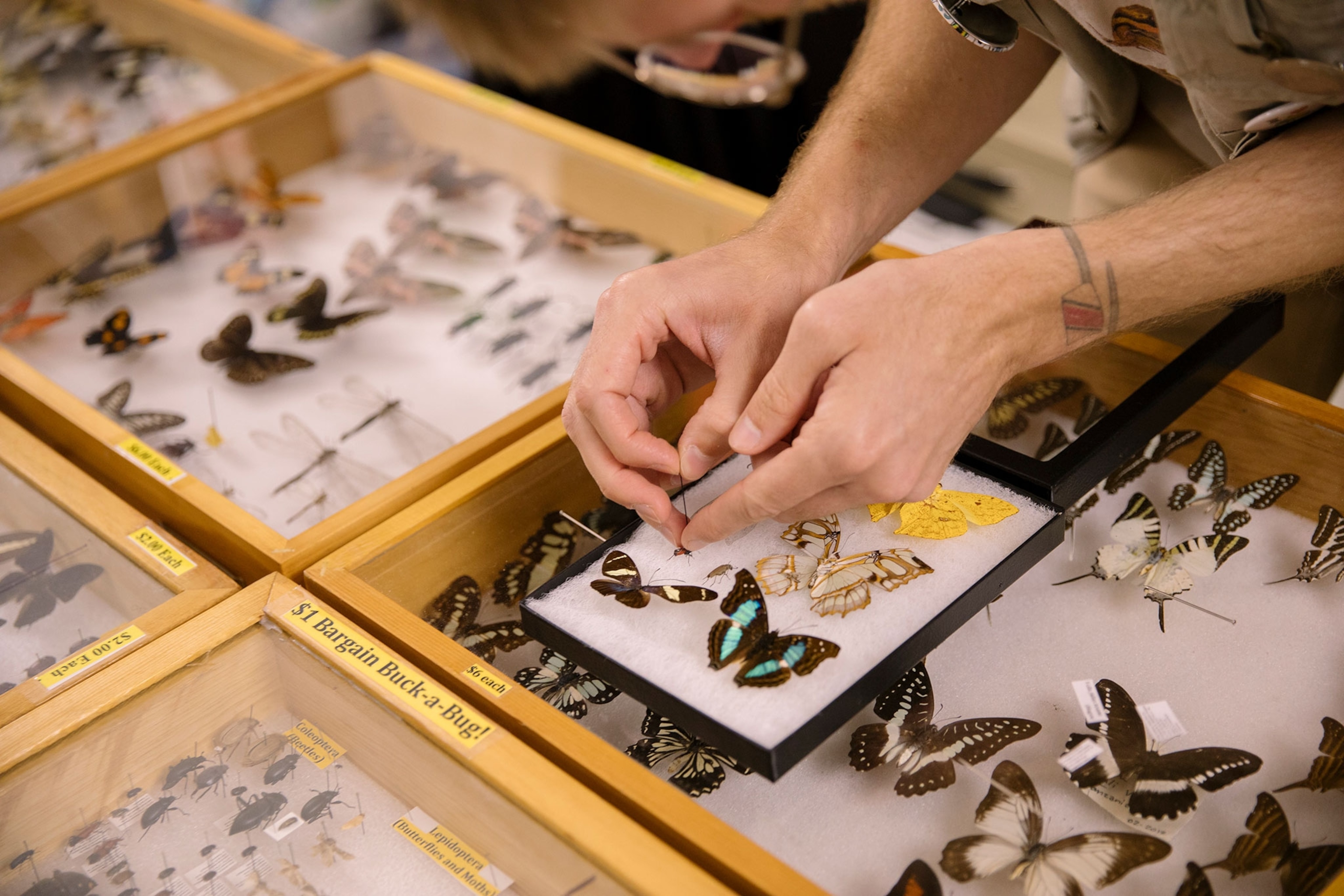
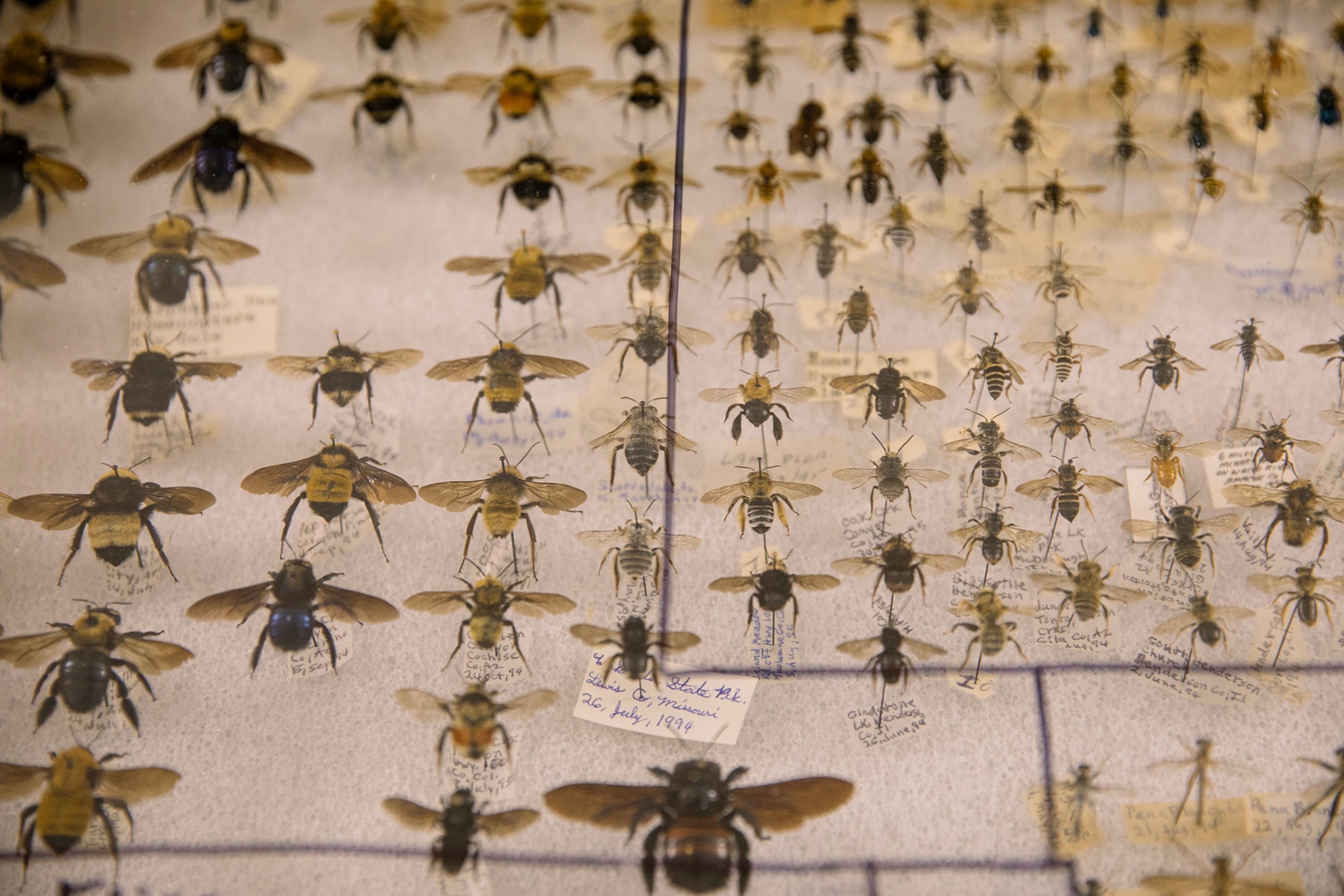
I caught up with Karner in May at the Los Angeles Museum of Natural History, where we both attended the Bug Fair, a two-day event celebrating anything and everything creepy crawly. I’ve spent most of my life avoiding insects, but I came to the Bug Fair to meet the people who can’t get enough of them.
More than 50 vendors occupying three museum wings were offering everything from edible worms (they taste like dried shrimp, the seller told me) to T-shirts with insect-inspired humor (“don’t kill my buzz”). But most people came for the thousands of invertebrates crawling around glass tanks or pinned inside display cases.

Karner was selling the latter. His booth was so popular that it was hard to steal him away from the throngs of fairgoers ogling the palm-size Hercules beetles, orange-and-brown lantern flies, and other creatures for sale.
I had heard from scientists and hobbyists that BioQuip is the gold standard for sourcing insects in an ethical and legal way. Gregarious and goateed, Karner tells me that he prides himself on doing just that. That means making sure his suppliers have secured the proper permits in their countries and that he has the legal paperwork to bring them into the country. It also means buying no more than a hundred insects of the same species from any one location in a year—and staying away from Europe altogether. Because regulations are weak in some countries, he says, “Europe is a great conduit to get illegal things out, so I just leave it alone.”
Karner says people have always paid for insects, but the internet has changed the industry. Now sellers can bypass companies like BioQuip and connect directly with buyers.
“That’s where the black market is at its best,” he says, referring to websites such as eBay. Indeed, it takes him about five seconds to find an advertisement on eBay for a Luzon peacock swallowtail, an endangered butterfly native to the Philippines that’s banned by CITES from international trade. “That’s like peddling a rhino horn or elephant tusk,” Karner says. The seller advertised it as “Papilio chi” instead of Papilio chikae, its scientific name. A couple of weeks after I inquired about the legality of the sale (I didn't get a clear answer), the seller deleted the reference to Papilio chi.
A spokesman for eBay, which bans the sale of illegal wildlife, wrote in an email that the company uses “a combination of technological and human resources to identify and remove problem listings.”
Insect criminals fall into three categories, Karner explains. There are the unwitting smugglers who don’t know about the complex red tape involved in collecting and transporting insects. There are the traffickers who lack legal paperwork because they don’t want to pay permit fees and find the laws “silly”—a not uncommon sentiment. (As one Facebook user wrote in a hobbyist group, “There is essentially nothing gained by stopping specimens without conservation relevance at the border.”)
Then there are the serious criminals who intend to sell rare, banned species because they know there’s a lucrative market for them. That might be someone like Hisayoshi Kojima, a Japanese man sentenced in 2007 to 21 months in prison for running an international trafficking operation. The Fish and Wildlife Service agent who investigated the case told NPR that Kojima paid local people around the world pennies on the dollar to poach endangered butterflies and insects he then sold on his website.
It’s not unusual for international dealers to hire local hunters—last year National Geographic chronicled the life of Jasmin Zainuddin, an Indonesian man who catches butterflies—some protected by law—and sells them at local tourist markets or to a butterfly boss who distributes them to traders around the world.
Sebastián Padrón, an entomologist with the University of Azuay, in Cuenca, Ecuador, came across a poacher several years ago in the Amazon rainforest who tried to sell him Prepona and morpho butterflies—iridescent aquamarine beauties. He says that although Ecuador has strict laws about insect collection and export, the country doesn’t have the resources to enforce them. According to Padrón, much of the contraband ends up in Japan, where insects have special fascination, and in the U.S. and Europe.
Entomologist Nancy Miorelli says vendors near her home in Quito, Ecuador, use the body parts of arthropods—mostly butterfly wings—to make earrings and necklaces to sell to tourists. When she asks the sellers how they source the animals, they can’t give her detailed answers. “I asked one if she knew if they were illegal, and she shrugged,” Miorelli says.
Why should we care?
It’s easy to dismiss invertebrate poaching as no big deal. More than a million recognized insect species and some 10 quintillion (that’s the number 1 followed by 18 zeros) bugs buzz, hiss, and fly around the planet. Worldwide, there are an estimated 12,000 millipede species and 900 species of tarantulas.
With so many critters populating Earth, how much of a dent can the commercial trade really make?







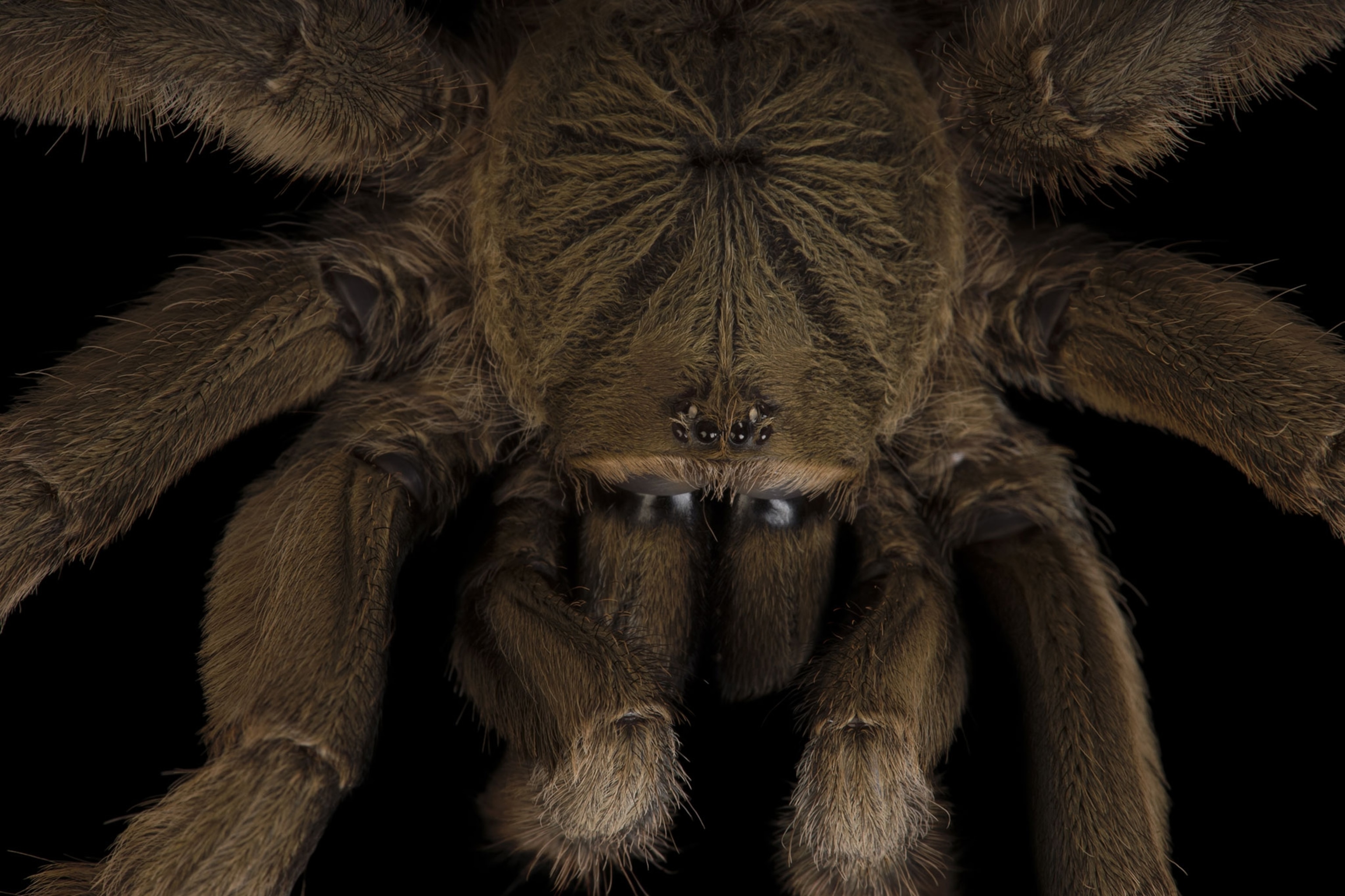
The short answer is that it depends. Tarantulas, for example, are especially vulnerable to poaching because they’re long-lived and reproduce infrequently. Insects, on the other hand, are resilient because they have short lifespans and produce lots of offspring.
But Shockley says that if a localized species already contending with other threats is taken in very large numbers, unfettered collecting can pose a real danger. (Shocking—albeit contested—research released last year suggested that habitat loss, pollutants, introduced species, and climate change have contributed to the decline of more than 40 percent of all insect species during the past several decades and that all insects could disappear within decades.)
Anophthalmus hitleri, a tiny reddish-brown beetle named after Adolf Hitler found in Slovenia, provides a bizarre example of the risks of overcollecting. The beetles (reportedly named in 1933 by German amateur entomologist Oscar Scheibel) became so popular among right-wing extremists that poachers cashing in on demand almost wiped them out in the early 2000s.
Most of the time, Shockley says, we don’t know how poaching affects species. “There’s stuff up in the canopy, there’s stuff at mid-levels, stuff on the ground.” Moreover, entomological research has a funding problem, which means there aren’t many people out there counting insects. Lack of data, not paucity of species, contributes to the paltry number of arthropods—90 species and three subspecies—that are regulated by CITES. “I know for me, I don’t want to run the risk of finding out what happens if you remove something,” Shockley adds.
Introducing an animal where it doesn’t naturally belong can be a problem too. If invertebrates smuggled into a new country get loose, they, or the parasites they host, can gobble up or otherwise harm native crops, plants, trees, or animals. “When you don’t know what’s coming in, there’s always that little concern,” says Greg Bartman, a U.S. Department of Agriculture employee who identifies insects found in cargo shipments. He points to the Indian walking stick insect as a cautionary tale: He suspects the exotic pet trade brought them to Southern California, where they’re wreaking havoc on hibiscuses, ivy, rosebushes, and other plants. And giant African millipedes (the same species of arthropods that escaped from a package addressed to Wlodzimie Lapkiewicz)? They sometimes carry a mite that can destroy bulb crops such as onions and garlic.
Even if poaching for the commercial trade posed no risk, the entomologists and hobbyists I spoke to think it’s simply unethical: “What scientifically useful information would be gleaned from collecting 10,000 jewel scarabs in a bucket trap from the same location on the same night?” Shockley says. And as Miorelli puts it, “People just walk into a place designed for conservation and kill their wildlife and take it out. It seems really disrespectful.”
Compelled to collect
When it comes to insects, Erica and Brian Ellis are so enthralled that they collect preserved specimens and display them around their home in Simi Valley, California.



I met the couple at the Bug Fair in Los Angeles. The Ellises left that day with five new prizes: a titan beetle, a millipede, a velvet ant, a Japanese hornet, and a tarantula hawk—an enormous wasp that paralyzes tarantulas before it eats them. All these animals have one thing in common: They’re among the biggest of their species—the Ellises’ main criterion for deciding which ones to buy. “It just kind of boggles the mind that they can get that large, to know that they were alive wandering the forest,” says Brian, who works in sales and marketing.
They bought their first insect, a shiny atlas beetle from Southeast Asia, at the Bug Fair seven years ago. “Even after we took him home, we would pull him out of the case and stare at him for a good 20, 30 minutes,” says Erica, an executive assistant at a biomedical pharmaceutical company. They soon became hooked on “the beauty and the differences” among arthropods, she says. Now they own about 50 preserved ones, including a two-foot-long walking stick insect from Southeast Asia that cost $1,200.
The Ellises say they like to buy from reputable sellers who provide detailed information about a creature’s identity and origin.
Fairgoer Max Orion Kesmodel isn’t surprised that there’s an illegal trade in insects. “I’m sure it’s a thing even without hearing about it because that’s how the world is,” he says. “If they do it with pearls, they’re going to do it with butterflies.”
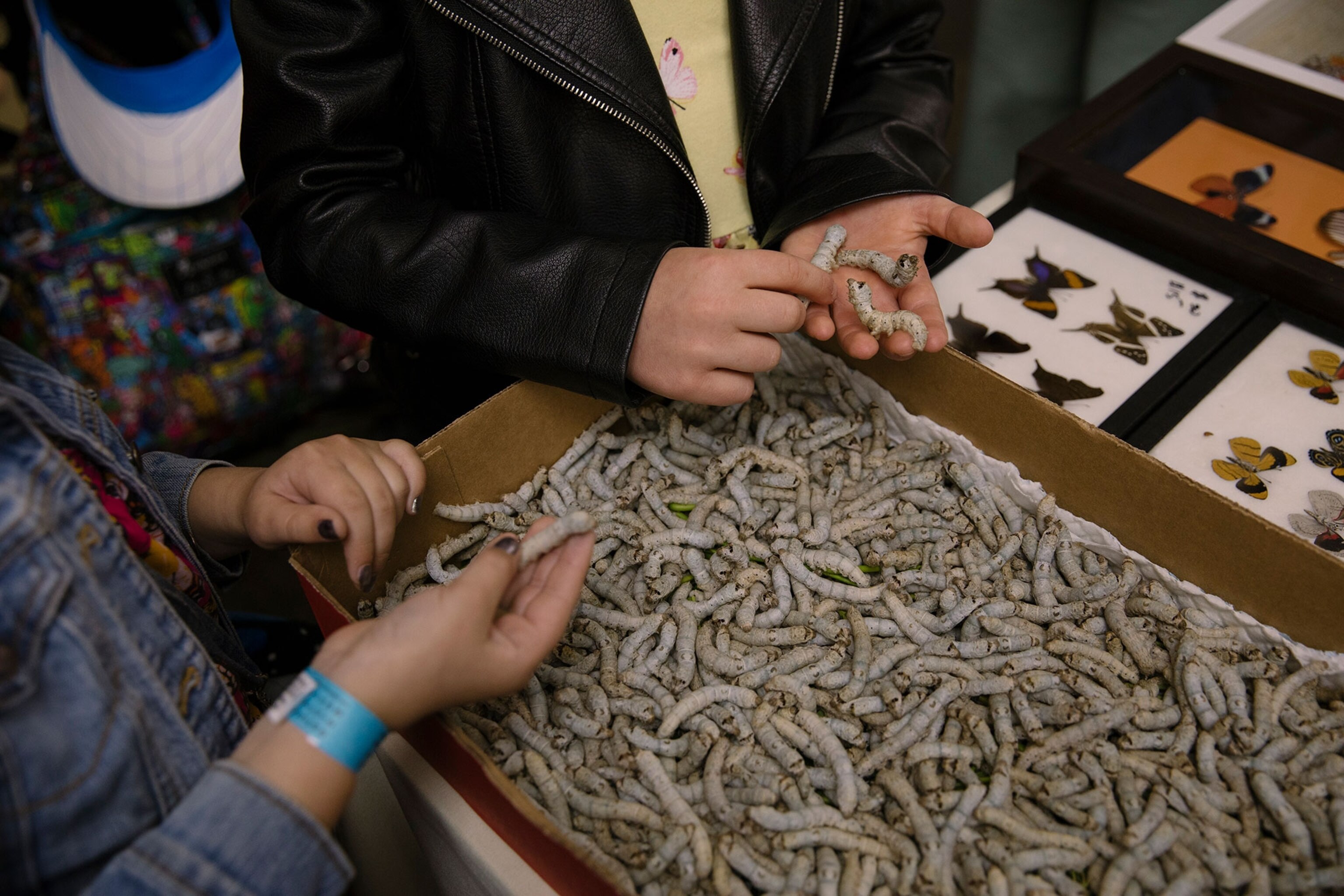
Kesmodel, 23, is studying entomology at Los Angeles Valley College. He’s fascinated by the sheer diversity of insects, and their splashy appearance aligns with his interest in photography. This year at the Bug Fair he bought a stick insect from Malaysia and two colorful moths to add to his 150-plus collection. In general, he looks for brightly hued specimens, butterflies in pristine condition, and little scarab beetles such as June bugs, which, unlike some larger beetles, lack the impressive jaws that “terrify” him.
He too says he likes to buy from people with good reputations. “I’ve never just gone to someone’s house to buy something or anything like that,” he says. When I ask if he ever questions sellers about whether they have legal paperwork, he says he hasn’t considered that, then adds, “I probably should now that I’m thinking about it.”
You May Also Like
Go Further
Animals
- How can we protect grizzlies from their biggest threat—trains?How can we protect grizzlies from their biggest threat—trains?
- This ‘saber-toothed’ salmon wasn’t quite what we thoughtThis ‘saber-toothed’ salmon wasn’t quite what we thought
- Why this rhino-zebra friendship makes perfect senseWhy this rhino-zebra friendship makes perfect sense
- When did bioluminescence evolve? It’s older than we thought.When did bioluminescence evolve? It’s older than we thought.
- Soy, skim … spider. Are any of these technically milk?Soy, skim … spider. Are any of these technically milk?
Environment
- Are the Great Lakes the key to solving America’s emissions conundrum?Are the Great Lakes the key to solving America’s emissions conundrum?
- The world’s historic sites face climate change. Can Petra lead the way?The world’s historic sites face climate change. Can Petra lead the way?
- This pristine piece of the Amazon shows nature’s resilienceThis pristine piece of the Amazon shows nature’s resilience
- Listen to 30 years of climate change transformed into haunting musicListen to 30 years of climate change transformed into haunting music
History & Culture
- Meet the original members of the tortured poets departmentMeet the original members of the tortured poets department
- Séances at the White House? Why these first ladies turned to the occultSéances at the White House? Why these first ladies turned to the occult
- Gambling is everywhere now. When is that a problem?Gambling is everywhere now. When is that a problem?
- Beauty is pain—at least it was in 17th-century SpainBeauty is pain—at least it was in 17th-century Spain
Science
- Here's how astronomers found one of the rarest phenomenons in spaceHere's how astronomers found one of the rarest phenomenons in space
- Not an extrovert or introvert? There’s a word for that.Not an extrovert or introvert? There’s a word for that.
- NASA has a plan to clean up space junk—but is going green enough?NASA has a plan to clean up space junk—but is going green enough?
- Soy, skim … spider. Are any of these technically milk?Soy, skim … spider. Are any of these technically milk?
Travel
- Could Mexico's Chepe Express be the ultimate slow rail adventure?Could Mexico's Chepe Express be the ultimate slow rail adventure?
- What it's like to hike the Camino del Mayab in MexicoWhat it's like to hike the Camino del Mayab in Mexico




